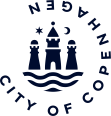Copenhagen’s harbor, once an industrial center, has undergone an interesting transformation over the years, evolving from a polluted waterway to a safe swimmable waterway. We will guide you through the timeline and initiatives that the city of Copenhagen took to make a Swimmable harbour possible
Historical Overview: In the early 1900s, water flowed directly into the harbor, eventually leading to Øresund via a sea-pipe. However, by the 1950s, concerns over water quality prompted the city’s health inspector to prohibit bathing in the harbor, with fishing also being forbidden.
Fast forward to 1989, a year that saw the formation of a task force dedicated to the development of Copenhagen. This was mostly due to the fact that in 1996 Copenhagen would be the cultural capital of Europe.
Infrastructure projects, including the Metro, airport expansion, and the development of Ørestad, were initiated. This also meant the start of cleaning the harbour.
The Birth of Harbor Baths: In 2002, the city took a big step by establishing the first harbor bath at Islands Brygge. Initially temporary, it became a permanent fixture in 2003. Subsequent years witnessed the creation of additional harbor baths at Fisketorvet (2003), Amager Strandpark (2005/06), Svanemøllen (2010), and Teglholmen (2011).
These harbor baths featured 25 to 75-meter long basins for swimming and jumps, with two basins designed specifically for children. Open all year and patrolled by lifeguards from June 1st to August 31st. Water quality samples were collected 20 times a year, and intensifies during stormwater events.
Environmental Initiatives: The key challenge in making the harbor swimmable was addressing CSOs, once crucial for industrial and transportation needs. Over the years, there was a significant reduction—from 1.6 million cubic meters per year in 1996 to 400,000 cubic meters per year by 2010.
Local rainwater separation in Ørestad contributed to cleaner waters, and advanced control measures were implemented. This included radar forecasts of rain intensity, hydraulic models, and strategic control of valves and pumps to optimize storm event runoff.
Benefits and Future Initiatives: The benefits of this transformation were threefold— economic, social, and environmental. Economically, the harbor’s revitalization led to business regeneration, increased real estate prices, investments, job creation, and economic growth.
Socially, the harbor became a hub for water activities, easily accessible to residents within 10 minutes, transforming industrial sites into city favorites.
From an environmental perspective, there was a reduced risk of flooding, increased biodiversity, ongoing improvement in water quality, and a transformed sewer system.
Looking forward, the city considered measures to protect this newfound haven. Discussions focused on disinfection during storm and flooding events, exploring methods such as filters, UV, and chemistry.
Additionally, stormwater control strategies were under consideration, redirecting water to controlled areas to safeguard the water environment without compromising public health.
Copenhagen’s harbor stands as a testament to the city’s commitment to environmental urban renewal, turning an industrial site into a swimmable waterway,


Our partners who have made their contributions.


Stay up to date about Swimmable Rivers, sign up for our newsletter.
Adress
Korte Ouderkerkerdijk 7
1096 GB Amsterdam
The Netherlands